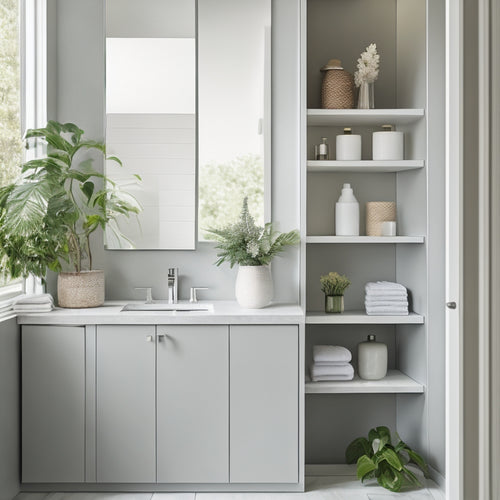
Essential Guide to Preserving Mushroom Spore Prints
Share
You're about to reveal the secret to preserving the valuable genetic information of mushroom species by mastering the art of spore print storage. This essential step in documenting, identifying, and conserving fungal diversity requires attention to detail and precision. You'll need a clear glass jar, scalpel, forceps, desiccant, and labeling materials to create a dry environment and airtight container. Label your container with the species name and collection date, and store it in a shielded location with consistent temperatures between 50°F and 70°F. By following these guidelines, you'll be well on your way to securing the preservation of valuable information - and that's just the beginning of what you'll discover.
Key Takeaways
• Store spore prints in airtight containers with desiccants to maintain a dry environment and prevent contamination.
• Label containers with species name and collection date for accurate identification and research.
• Maintain consistent temperatures between 50°F and 70°F and low humidity levels to prevent moisture buildup.
• Handle spore prints gently to prevent damage or contamination, and monitor for signs of degradation or loss of potency.
• Control humidity levels, reduce light exposure, and maintain stable temperatures to create ideal storage conditions for preservation.
Importance of Spore Print Storage
By storing spore prints, you secure the preservation of valuable information for documenting mushroom species, facilitating identification, and conserving genetic diversity. This collection of spores serves as an essential resource for mycologists, researchers, and enthusiasts alike.
Through spore print documentation, you'll be able to identify specific species, track their distribution, and understand their life cycles. Additionally, conserving genetic diversity guarantees the long-term health and resilience of fungal populations.
The Spore Print Process Explained
To reveal the unique characteristics of a mushroom species, you place the cap gill-side down on a non-porous surface, allowing the spores to fall and create a print that unveils their distinct color and pattern.
This process is vital for identification, as spore print colors can range from white to black, and patterns can be intricate or simple. By collecting spores and examining them under a microscope, you can observe the shape, size, and ornamentation of the spores, which are essential for accurate identification.
The spore print process is an essential step in understanding the biology of mushrooms and developing effective identification techniques.
With a clear understanding of spore print colors and patterns, you can reveal the secrets of mushroom species and contribute to the advancement of mycological research.
Materials and Steps for Storage
You'll need a range of specific materials to properly store your mushroom spore prints. These include a clear glass jar, scalpel, forceps, desiccant, storage containers, and labeling materials. Once you have these materials, carefully clean and dry the spore print to prevent contamination.
Use a desiccant to maintain a dry environment, which is essential for preserving the spores. Package the spore print in an airtight container, ensuring it's sealed tightly to prevent moisture and air from entering.
Label the container with identification information, such as the species name and collection date, using precise labeling techniques. This will aid in identification and research.
Proper Storage and Handling Guidelines
Once the spore print is properly packaged, it's important that you select a storage location that shields it from direct sunlight, maintains a consistent temperature between 50°F and 70°F (10°C and 21°C), and guarantees low humidity levels to prevent moisture buildup. This will guarantee the spore print remains viable and contamination-free.
When handling spore prints, employ gentle handling techniques to prevent damage or contamination. Store them in airtight containers with desiccants to maintain a dry environment. Implementing these storage solutions will safeguard your spore prints from degradation.
Creating Ideal Storage Conditions
Establishing a stable and controlled environment is essential for preserving the integrity of your spore prints, as it prevents degradation and contamination. To create ideal storage conditions, you'll need to control humidity, temperature, light exposure, and air quality.
| Environmental Factor | Optimal Range | Why It Matters |
|---|---|---|
| Humidity | 30-50% | Prevents mold growth and spore degradation |
| Temperature | 10-20°C (50-68°F) | Maintains temperature stability and prevents contamination |
| Light Exposure | Low to none | Reduces risk of spore degradation and contamination |
Monitoring and Preserving Spore Prints
To guarantee the long-term viability of your stored spore prints, consistent monitoring is essential for detecting any signs of degradation, contamination, or loss of potency.
You should regularly inspect your spore prints for mold, fungal growth, or discoloration, which can indicate contamination or degradation. Implementing quality control measures safeguards the integrity of your spore prints, allowing you to maintain their potency and viability.
This is vital for fungal conservation, as it enables the preservation of genetic diversity and facilitates further research.
Long-Term Preservation Best Practices
What specific conditions must you maintain to guarantee the long-term preservation of your spore prints, and how can you optimize storage protocols to maximize their viability?
To ensure peak storage, follow these guidelines:
| Storage Techniques | Preservation Methods | Ideal Conditions |
|---|---|---|
| Airtight containers | Desiccants, darkness | Low humidity (<60%) |
| Cool, dry locations | Refrigeration | Consistent temperature (4-10°C) |
| Protective packaging | Vacuum-sealing | Pest protection, good air quality |
Frequently Asked Questions
Can I Store Spore Prints at Room Temperature Without Refrigeration?
You're tempting fate by storing spore prints at room temperature without refrigeration, as temperature fluctuations and suboptimal humidity can wreak havoc on viability, but with careful monitoring and controlled conditions, you might get away with it.
How Often Should I Inspect Stored Spore Prints for Contamination?
You should inspect stored spore prints every 3-6 months to mitigate contamination risks and monitor spore aging, ensuring timely intervention and maintaining ideal preservation conditions.
Are There Any Special Storage Considerations for Rare Mushroom Species?
You think you're being cautious storing spore prints, but rare species demand extra TLC. For them, you'll need to fine-tune climate control, maintaining humidity levels between 40-50% to prevent moisture-related degradation.
Can I Store Spore Prints in Plastic Bags or Ziplock Containers?
You should avoid storing spore prints in plastic bags or ziplock containers, as they allow oxygen permeability and can lead to moisture buildup, compromising the viability and longevity of your valuable spore prints.
Do I Need to Store Spore Prints in a Separate Container for Each Species?
Did you know that a single mushroom can produce up to 100 million spores per day? To guarantee species purity, you should store spore prints in separate containers for each species, practicing spore segregation and species isolation to prevent cross-contamination.
Related Posts
-

Wall-Mounted Bathroom Storage for Family Homes
Wall-mounted bathroom storage is a transformative solution for your family's space. It cleverly maximizes vertical ar...
-

Multi-Functional Vintage Bathroom Storage Units
Multi-functional vintage bathroom storage units merge style with function, helping you create an organized and aesthe...
-

Modern Bathroom Cabinetry for Small Bathrooms
When designing modern bathroom cabinetry for small spaces, your focus should be on maximizing storage while embracing...


